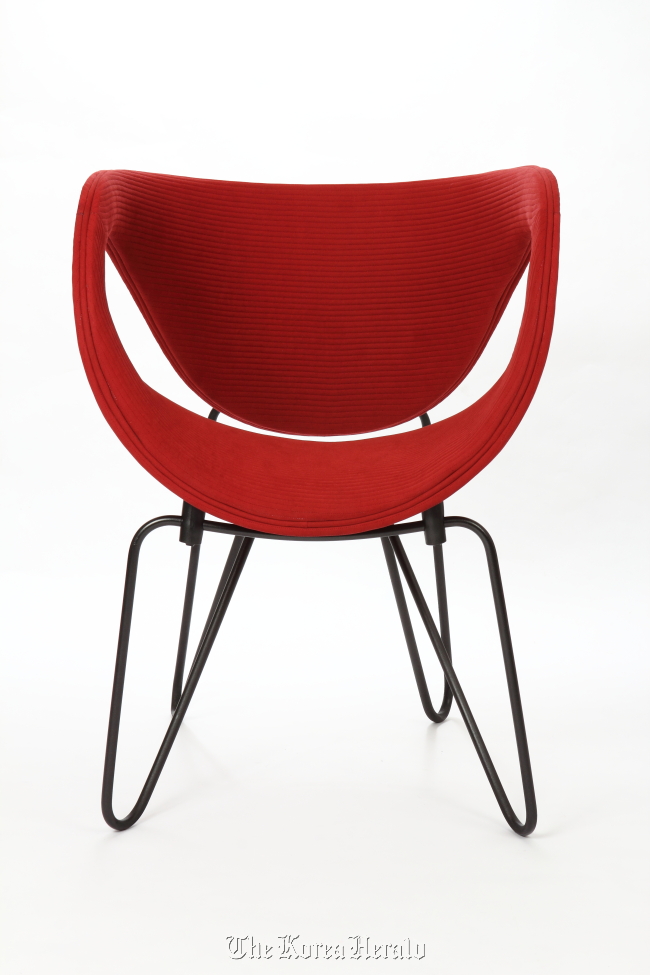The following is the last in a series of articles on design prepared in anticipation of the Herald Design Forum which takes place Sept. 19-21. ― Ed.
Korean design is breaking out on the world stage as more design products from the country receive attention at global fairs and a growing number of local designers receive international awards.
At Maison et Objet, an international home decoration fair held in Paris from Sept. 7-11, 32 products made by Korean companies and individual designers selected by the city-run Seoul Design Foundation received attention from foreign buyers and design experts with their innovative and creative designs.
Korean designers enjoyed success at the fair with about 290 provisional contracts signed, including designer Han Sung-jae’s simple yet futuristic wooden speaker, which was introduced via a French broadcast and attracted interest of collectors and buyers.
Korean design is breaking out on the world stage as more design products from the country receive attention at global fairs and a growing number of local designers receive international awards.
At Maison et Objet, an international home decoration fair held in Paris from Sept. 7-11, 32 products made by Korean companies and individual designers selected by the city-run Seoul Design Foundation received attention from foreign buyers and design experts with their innovative and creative designs.
Korean designers enjoyed success at the fair with about 290 provisional contracts signed, including designer Han Sung-jae’s simple yet futuristic wooden speaker, which was introduced via a French broadcast and attracted interest of collectors and buyers.

Another team of Korean designers will present their ambitious products at the 100% Design 2012, the largest contemporary interior design trade event in the U.K., from Wednesday to Saturday in London.
“Most people have little awareness of Korean design while they think highly of Japanese design. We think the fair will be an opportunity to introduce Korean design to many people,” said Maing Eun-joo, director of international affairs division of the Korea Institute of Design Promotion, which supports and promotes Korean designers participating at the fair.
While Korean design’s influence on the global stage seems limited, designers are expanding their presence and more are recognized by global design awards.
The number of design awards given by prestigious awards such as Red-dot, IDEA and iF has been increasing steadily.
Red-dot Design Award recipients increased from 1,437 in 2008 to 1,964 in 2011; those recognized by an IDEA Design Award rose from 114 in 2008 to 191 in 2011.
The portion of Korean designers or teams among iF design award recipients increased from 6.8 percent in 2008 to 10.8 percent in 2011.
“Organizers of such design awards say there are always Korean designers in the list of finalists and their performance is remarkable,” said Maing.
Managing director of iF design award Ralph Wiegmann also said Korean designers’ performance at the international level improving, but that the trend is not surprising.
“Yes, I do (find them doing well), but to me, it is not surprising. I have been visiting Korea for 16 years now and I could follow closely how much the design capabilities and competence improved,” said Wiegmann.
Wiegmann finds such achievement is in part driven by strong performance by large companies such as Samsung, LG and Hyundai in a short period of time and the high-tech environment surrounding young Korean designers as well.
“It is good if you have strong examples to follow; you are lucky to have global leaders in certain industries, because that means motivation, ambition and passion to improve,” said Wiegmann.
Samsung Electronics received the largest number of awards among companies participating at the IDEA design awards last month, including seven awards for digital X-ray equipment and a portable kitchen cook top.
Wiegmann noted it’s not just mega-corporations like Samsung and LG standing out on the global design stage, but companies like Woongjin Coway, which makes water purifiers, air purifiers and bathroom appliances, have shown “impressive development in design.“
Individual designers are also gaining competitive edge in the global design scene.
“Nowadays there is a Korean designer for sure at major global companies,” said Maing.
“There is a Korean designer at design department of major global corporations such as Mercedes-Benz and Van Cleef and Arpels.”
The government names such designers “Next Generation Design Leader” and supports them to succeed at the global level.
“In 10 years, we will see more Korean designers playing important roles in the design world,” said Maing.
Wiegmann stresses the importance of government investment in design to further develop the design industry.
“This is one of the best investments, as you invest in human capital,” said Wiegmann.
By Lee Woo-young (wylee@heraldcorp.com)











![[Hello India] Hyundai Motor vows to boost 'clean mobility' in India](http://res.heraldm.com/phpwas/restmb_idxmake.php?idx=644&simg=/content/image/2024/04/25/20240425050672_0.jpg&u=)







